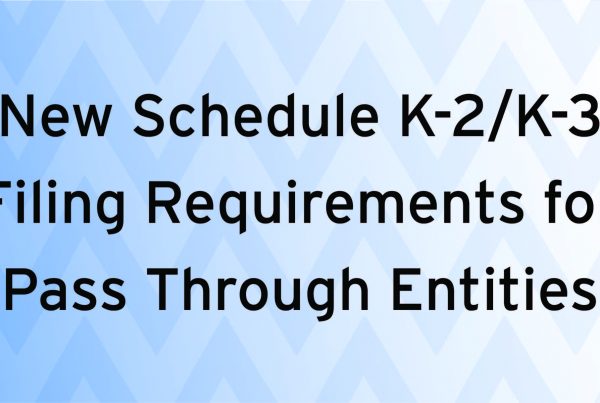
by Edward Fronczkowski, CPA, Partner
The Coronavirus Aid, Relief, and Economic Security (CARES) Act was passed on March 25, 2020. CARES included several measures designed to help IRA and retirement plan account holders cope with financial fallout from the virus. In late June, the IRS released Notice 2020-50, which provided extra guidance on the implementation of these provisions. As of today, the following discussion applies to distributions made on or after January 1, 2020 and before December 31, 2020.
The CARES Act implements some sweeping changes to both plan distributions and plan loans. Under the CARES Act, qualified IRA and retirement plan account holders, affected by the virus, can withdraw up to $100,000 of their vested balance without having to pay the 10% early-withdrawal penalty (25% for certain SIMPLE IRAs). They may choose to spread the income from these “coronavirus-related distributions,” (CRDs), ratably over a three-year period to help manage the associated income tax liability. In addition, the CRD (or any portion of if) can be recontributed to an eligible retirement plan over a three-year period. The recontributed amounts must be eligible for tax-free rollover treatment and will be treated as though made within the 60 day rollover period – even though made over a three-year period. Therefore the amounts repaid would be treated as a trustee-to-trustee transfer, avoiding tax consequences. Qualified beneficiaries may also treat a distribution as a CRD but nonspousal beneficiaries are not permitted to recontribute funds, as they would not otherwise be eligible for a rollover.
The CARES Act includes a provision related to plan loans taken between March 27 and September 22, 2020. The changes to loans, under the CARES Act state that qualified coronavirus-affected retirement plan participants may also be able to borrow up to 100% of their vested account balance or $100,000 (up from $50,000), whichever is less. In addition, any qualified participant with an outstanding loan who has payments due between March 27, 2020, and December 31, 2020, may be able to delay those payments by one year.
To be eligible for coronavirus-related provisions in the CARES Act, “qualified individuals” are IRA owners and retirement plan participants diagnosed with the virus, those whose spouses or dependents were diagnosed with the illness, and account holders who experienced certain adverse financial consequences as a result of the pandemic. IRS Notice 2020-50 expanded the definition to also include an account holder, spouse, or household member who has experienced pandemic-related financial setbacks as a result of:
• A quarantine, furlough, layoff, or reduced work hours
• An inability to work due to lack of childcare
• Owning a business forced to close or reduce hours
• Reduced pay or self-employment income
• A rescinded job offer or delayed start date for a job
These expanded eligibility provisions enhance the opportunities for account holders to take a CRD.
The Notice clarifies that qualified individuals can take multiple distributions totaling no more than $100,000 regardless of actual need. In other words, the total amount withdrawn does not need to match the amount of the adverse financial consequence. (Retirement investors should carefully consider the pros and cons before withdrawing money.)
It also states that individuals will report a coronavirus-related distribution (or distributions) on their federal income tax returns and on Form 8915-E, Qualified 2020 Disaster Retirement Plan Distributions and Repayments. Individuals can also use this form to report any recontributed amounts. As noted above, individuals can choose to either spread the income ratably over three years or report it all in year one; however, once a decision is indicated on the initial tax filing, it cannot be changed. Note that if multiple CRDs occur in 2020, they must all be treated consistently — either ratably over three years or all at once. Plan administrators will issue Form 1099-R for any CRD’s. While the 20% withholding on the distribution is not required, the CRD is eligible for voluntary withholding.
Taxpayers who recontribute amounts after paying taxes on reported CRD income will have to file amended returns and Form 8915-E to recoup the payments. Taxpayers who elect to report income over three years and then recontribute amounts that exceed the amount required to be reported in any given year may “carry forward” the excess contributions — i.e., they may report the additional amounts on the next year’s tax return.
The Notice also clarifies that amounts can be recontributed at any point during the three-year period beginning the day after the day of a CRD. Amounts recontributed will not apply to the one-rollover-per-year rule.
Regarding plan loans, participants who delay their payments as permitted by the CARES Act should understand that once the delay period ends, their loan payments will be recalculated to include interest that accrued over the time frame and reamortized over a period up to one year longer than the original term of the loan.
Retirement plans are not required to adopt the loan and withdrawal provisions, so check with your plan administrator to see which options might apply to you. However, qualified individuals whose plans do not specifically adopt the CARES Act provisions may choose to categorize certain other types of distributions — including distributions that in any other year would be considered RMDs — as CRDs on their tax returns, provided the total amount does not exceed $100,000.
Please contact your Maillie representative for more information.



